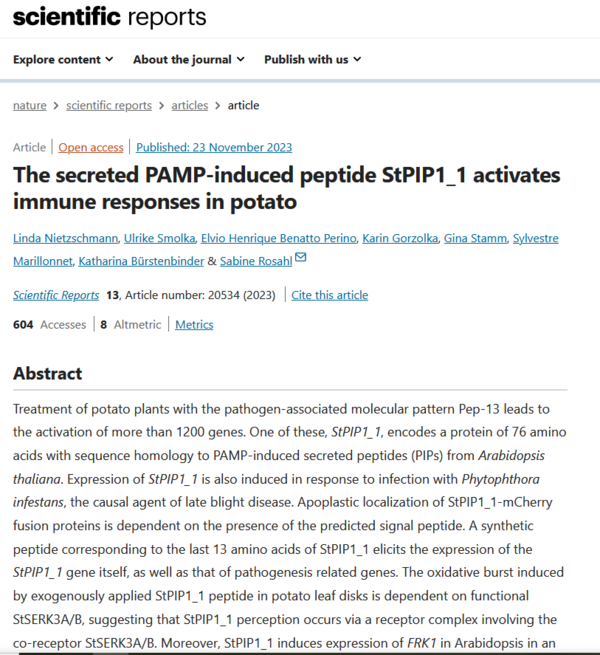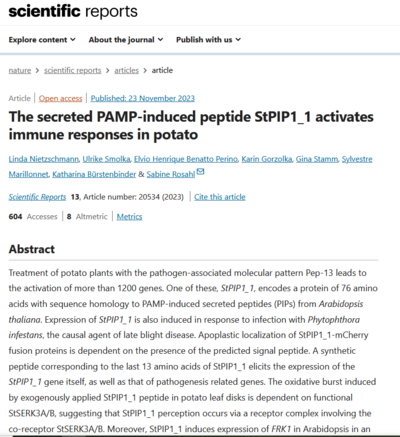New immune modulator discovered in potato.
Plant immune receptors recognize different structures when attacked by pathogens or herbivores, such as pathogen-associated molecular patterns (PAMPs), damage-associated molecular patterns (DAMPs) and phytocytokines. Phytocytokines are plant peptides that are produced inside the cell after pathogen attack and transported into the apoplast. Here they regulate the plant immune response by activating a signaling pathway that overlaps with the signaling cascades induced by PAMP and DAMP. IPB scientists have recently discovered two new phytocytokine molecules in potato. They applied the PAMP Pep-13, originally discovered in Phytophthora, to potato plants and then screened the more than 1200 activated genes for candidates that play a role in plant immune responses.
As a result of these transcriptome analyses in Solanum tuberosum, they identified two new PAMP-induced secreted peptides, the StPIPs, whose expression was increased after Pep-13 treatment. The infection of potato plants with the (entire) pathogen of late blight Phytophthora infestans and also the infiltration of a synthetic and truncated variant of StPIPs led to the activation of the StPIP genes and then to the production of reactive oxygen species and other defense substances in the plant. The perception of Pep-13 and - as the Halle scientists now discovered - also of StPIP occurs in the potato via the co-receptors SOMATIC EMBRYOGENESIS RECEPTOR KINASE 3A/B. As expected, transgenic potato plants with a reduced expression of the co-receptors were not able to trigger an oxidative burst or initiate the defense kinase cascade upon elicitor treatment.
To be effective as phytocytokines, the peptides must be present in the apoplast. This can occur through secretion or through release into the apoplast after cell damage. For the potato StPIPs, the scientists could show that the transport into the apoplast depends on an N-terminal signal peptide indicating a secretory way. The amino acid sequences of StPIP and also its observed function strongly resemble the already known phytocytokine AtPIP from Arabidopsis thaliana. Phytocytokines are important factors in the plant immune response, the scientists conclude. They are recognized by plasma membrane receptors and enhance immune responses by increasing cytosolic calcium, production of reactive oxygen species (ROS), activation of MAP kinases, and by reprogramming transcription.



